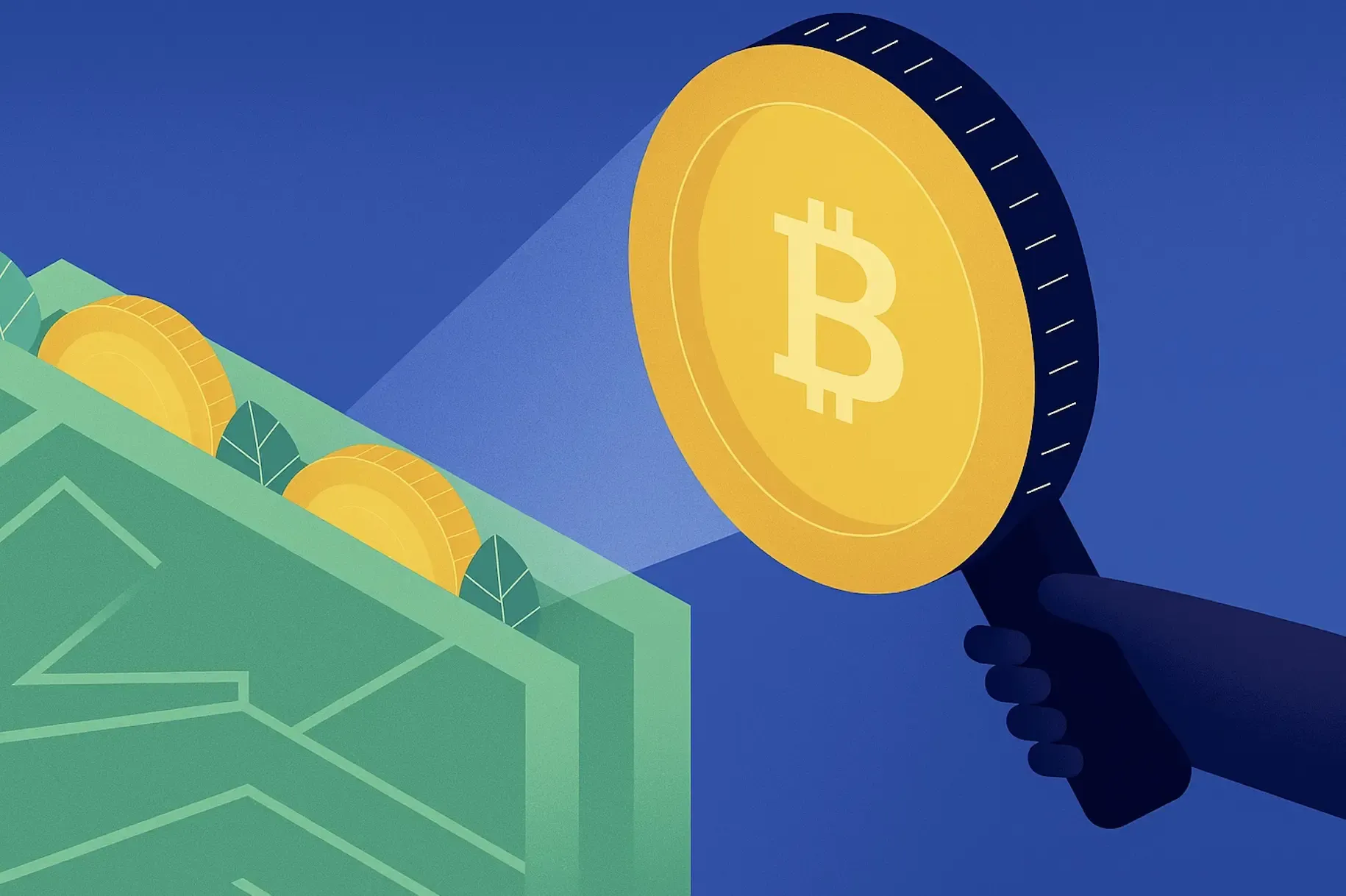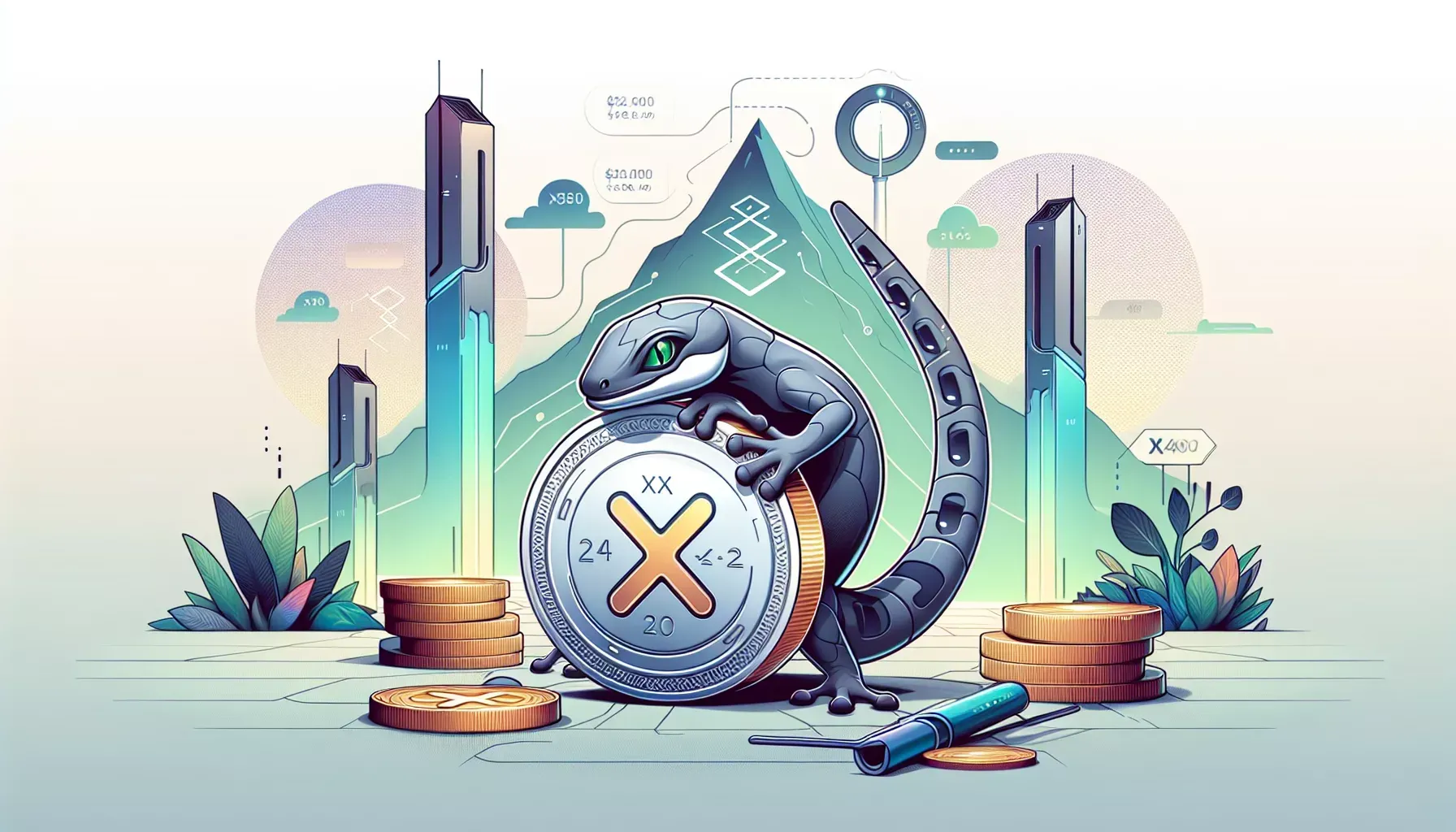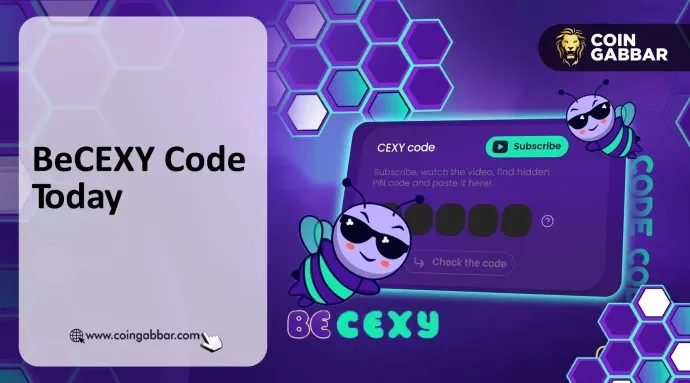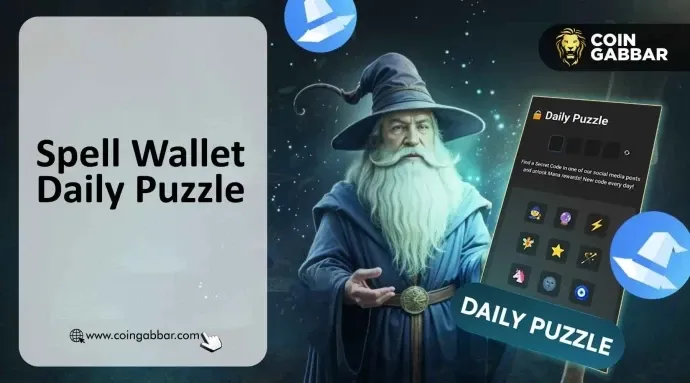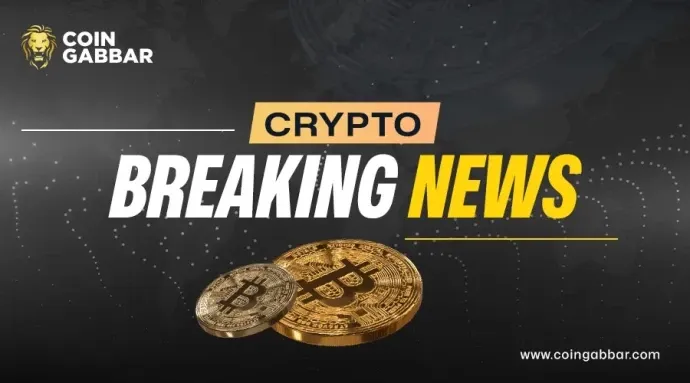Protocol Definition
x402 is an open-source internet-native payment protocol based on the HTTP/1.1 "402 Payment Required" status code. It allows users to complete access through on-chain payments when initiating API requests, without the need for traditional registration, OAuth, or complex signatures.
The protocol design emphasizes zero cost and frictionless transactions: x402 itself does not charge any additional fees to merchants or customers; payments are confirmed almost instantly (typically within about 2 seconds on-chain); the protocol is blockchain-agnostic, allowing any blockchain that supports smart contracts to be used for settlement. The integration barrier is very low, requiring only a single line of middleware code to be inserted into existing web services to start accepting cryptocurrency payments.
No additional fees: The protocol does not charge fees at the protocol level; users only bear the underlying network costs.
Instant settlement: Once a payment is submitted, settlement is completed almost instantly, eliminating the traditional T+2 wait.
Cross-chain support: The protocol design is independent of specific blockchains or tokens, allowing integration with any network that supports smart contracts or payment channels.
Lightweight integration: Developers only need to use HTTP headers and standard status codes to support x402.
x402 leverages existing HTTP infrastructure to implement payment logic, embedding payment information into the response headers of web resources, enabling machines to recognize and automatically execute payment processes. This design automates payment processes that traditionally required human intervention: AI agents can complete transactions without filling out forms or handling authentication. Overall, x402 introduces a native value layer for web services, providing a viable foundation for micropayments and pay-per-use models.
Reasons for Popularity
Since its launch, x402 has quickly attracted market attention and investor enthusiasm. Firstly, endorsements from leading companies have significantly increased the protocol's visibility: Coinbase and Cloudflare jointly announced the establishment of the x402 Foundation to promote the protocol as an open standard.
Coinbase's payment experience and liquidity capabilities, combined with Cloudflare's distribution network covering nearly 80% of websites, are expected to quickly resolve the "chicken or egg" dilemma of the new protocol. As x402 founder Erik Reppel stated, "The business of agents is a once-in-a-lifetime opportunity to rethink the flow of online value," highlighting the strategic significance of this new model.
Secondly, market sentiment and speculation have also driven up the popularity of x402. In October 2025, there was a frenzy in the market for x402-related tokens: According to KuCoin, the market capitalization of the x402 ecosystem surged from about $178 million to $832 million within three days in late October, with 44 related tokens already listed in the market. Media and social platforms have focused on this "agent economy" concept; several well-known companies (such as Google, Visa, AWS) have also been reported to be testing the x402 protocol. Additionally, the tech community has shown strong interest in the revival of the long-unused HTTP 402 status code, exploring its potential value in AI and IoT scenarios.
Technical Principles
x402 fully embeds the payment process into HTTP communication, achieving seamless on-chain settlement. Its workflow is as follows: the client requests a protected resource, and if the request does not include payment, the server returns the HTTP/1.1 402 (Payment Required) status code, specifying the required payment information in the response headers. Upon receiving the 402, the client can automatically send the specified amount of cryptocurrency to the designated blockchain address (usually a stablecoin wallet); after successful payment, the client retries the original request, and the server verifies the on-chain payment before returning the normal content. The entire process completes automatic payments between machines without user interaction.
The core of this design lies in machine-readable payment instructions: payment requirements (amount, recipient address, etc.) are encoded in the HTTP headers, allowing clients (such as AI agents or automated programs) to parse and execute on-chain transactions. Settlement can be completed using smart contracts or token transfers on existing blockchains, typically arriving within 2 seconds. Because the protocol standards are open and lightweight, any HTTP-supporting backend can implement integration.
Compared to traditional payment methods, x402 eliminates human elements such as user accounts, logins, and two-factor authentication, making the payment process highly automated. As noted in the PayRam blog, AI agents cannot fill out credit card information or handle mobile verification codes, while x402 treats payment information as a "native attribute" of web resources, completely removing such barriers and achieving truly autonomous digital commerce. Furthermore, the finality of blockchain guarantees that transactions are irreversible, meaning there is no need to worry about refunds or fraud disputes typical of traditional payments.
Business Ecosystem
The x402 protocol ecosystem is driven by multiple parties. Strategic partners include Coinbase and Cloudflare: both have announced the co-creation of the x402 Foundation to promote internet-native currency in the form of open standards. Coinbase provides digital financial technology and liquidity, while Cloudflare offers global content distribution and developer networks, forming a powerful synergy. The developer ecosystem behind the protocol is rapidly forming: from official GitHub and documentation to community discussions, a number of infrastructure providers and payment gateways (such as PayRam) are dedicated to simplifying the access process.
The potential application scenarios for x402 are extensive. Official documentation examples include: AI agents can pay for API requests in real-time; IoT or cloud services can enable paid access without requiring user registration; content creators can leverage x402 for true pay-per-click and pay-per-content models. Companies like PayRam have launched supporting middleware and SDKs to transform the protocol into user-friendly products. For instance, PayRam provides a single-point access interface, allowing merchants to process x402 payments across multiple public chains (such as Solana, Tron) and various stablecoins (USDT, USDC, etc.), solving the multi-chain integration issue.
Impact on the Crypto Industry and the Internet
The emergence of x402 has profound implications for the crypto ecosystem and internet architecture. In the blockchain space, it builds a new value transfer layer, providing micropayment infrastructure for applications like DeFi. Traditional payment systems struggle to support machine-to-machine economies, while x402 "provides the necessary payment infrastructure for the emerging machine-to-machine economy, enabling autonomous AI agents to pay for data and services without human intervention."
This concept aligns with Gartner's prediction: "By 2030, 50% of service requests will be initiated by intelligent agents," thus necessitating a native on-chain financial pillar.
Blockchain technology plays a key role in this process: Teléfonica Tech points out that "blockchain technology itself is key to solving trust issues in autonomous systems," as it records every action through a decentralized ledger, making agent behavior verifiable and traceable. Smart contracts automatically execute agreements and seamlessly complete payments, while token micropayment incentive mechanisms provide economic motivation for collaboration and competition among agents.
On the internet level, x402 promotes a shift from an ad-driven model to a value-driven model. OneSafe reports that the revival of the HTTP 402 code will lead to a "value-driven internet," addressing the original sin of relying on advertising due to the lack of direct pricing mechanisms. x402 embeds payments and value into every online interaction, making access to online content as natural as inserting a coin, opening new revenue channels for content creators and service providers. PayRam concludes that by activating the dormant HTTP 402 status code, x402 introduces an open, efficient, and programmable value layer to the web, making previously unfeasible micropayment and pay-per-use business models possible. As AI agents drive the arrival of the "programmatic micropayment" era, users and automated systems can each manage digital wallets and independently complete transactions, reshaping the commercial landscape of the internet.
Transformation of Charging Models
x402 drives a profound transformation in the charging models for digital services. Previously, APIs and online content primarily adopted subscription or package models, as traditional payment costs were prohibitively high, making it impossible to bill for single calls or small transactions. x402 leverages the low-cost transaction capabilities of blockchain, making pay-per-call a viable option: with extremely low on-chain fees, even payments smaller than a cent can be economically processed. According to PayRam's report, this makes the true pay-per-use model feasible for the first time. This billing flexibility lowers the barriers for developers and consumers, facilitating the commercialization of the API economy and microservices.
Correspondingly, the combination of stablecoins and automated trading will also give rise to a new "programmatic micropayment" ecosystem. OneSafe analysis indicates that as AI agents take on more transactions, the combination of stablecoins, crypto security, and automation mechanisms will foster robust profit strategies; in the future, every digital wallet may automatically pay for required services, completely removing human involvement. Overall, x402 is reshaping the web's business model, shifting from a user-biased subscription fee to a more flexible and fair pay-per-use system.
Extended Significance
Impact of AI Agents on the Crypto Industry
AI agents (Autonomous Agents) are intelligent systems capable of planning, executing tasks, and continuously learning autonomously. The x402 protocol provides a financial foundation for the application of such agents in the crypto space: it enables AI agents to pay directly on-chain for data, cloud resources, or other services without human intervention.
According to PayRam's analysis, x402 provides the "necessary payment infrastructure" for the emerging machine economy, meeting the needs of AI agents for automated trading. For example, AI agents can pay real-time data subscription fees per API call, IoT devices can purchase cloud storage and bandwidth on demand, and smart assistants can independently purchase digital goods or even physical accessories. These application scenarios demonstrate x402's powerful driving force for microservices and the API economy.
The characteristics of blockchain further enhance this impact. All actions and decisions of agents are permanently recorded on-chain, meaning that any behavior can be traced and audited, significantly increasing trust in autonomous systems. Teléfonica Tech points out that "blockchain can record all actions and decisions of agents," providing unprecedented transparency for the reliability of AI systems.
At the same time, smart contracts and token mechanisms provide economic incentives for collaboration among agents: cryptocurrencies enable frictionless micropayments, and smart contracts automatically fulfill agreement terms, forming a new economic system. This means that multiple AI agents can pay, collaborate, or compete with each other without a central coordinator, generating unprecedented service and application models.
Additionally, mechanisms like DAOs (Decentralized Autonomous Organizations) are expected to combine with AI agents to further automate governance. Some agents may directly accept DAO instructions and budgets, using token voting to decide on agent upgrades or replacements. Decentralized identity (DID) frameworks can link agents to reputation, allowing highly trustworthy agents to gain more opportunities. In summary, AI agents are giving rise to a new "agent economy"—AI systems becoming autonomous economic entities, interacting on-chain and driving value flow.
x402, Not a Universal Magic
Perspective: The internet over the past 20 years has primarily relied on "free + advertising monetization," with privacy being traded, which is the "original sin" of the internet.
Reflection: Advertising is indeed very important, but it is not the only or irreplaceable business model.
Global advertising spending is at the trillion-dollar level, and advertising continues to grow, remaining a core source of revenue for many content platforms in the short term (for example, reports from IAB/PwC and various agencies indicate that the scale of digital advertising is in the hundreds of billions and still growing). This indicates that advertising is not a "thing of the past," but rather a substantial and viable source of revenue currently.
Diverse business models coexist: In addition to advertising, models such as subscriptions, paid APIs, sponsorships, paid content, e-commerce revenue sharing, and SaaS subscriptions have long existed and are gradually growing (especially in the news, professional content, and B2B API markets). For instance, research targeting publishers shows that subscription revenue in certain segments is approaching or exceeding the proportion of advertising revenue. AOP
Perspective: AI agents will replace human browsing; AI will not be influenced by advertising and will not "pay," thus the advertising economy will collapse; AI will either scrape or purchase content, and purchasing requires micropayments.
Reflection: The idea that "AI will not be swayed by advertising" is a logical overextension.
Even in model-driven consumption scenarios, the value of advertising does not completely disappear: companies can reposition their advertising targets—not to "sway the model" but to "sway the paying entities behind the model (humans or businesses)," or directly pay model providers/tuners to make them "inclined" to recommend certain products (similar to content sponsorship or paid prioritization).
Furthermore, in many business applications, AI, as a tool, can present "insertable commercial content" or "paid promotion" capabilities (for example, API outputs may include results arranged in a paid priority). This is a transformation of the business model rather than its extinction.
The assumption that "AI agents completely replace human browsing" is unfounded and will not happen instantaneously.
Even as AI agents increasingly take on retrieval/summarization tasks, many scenarios still require human judgment, experiential consumption, brand recognition, or direct transactions (for example, the final confirmation of e-commerce purchases is often still made by humans). Additionally, adjustments by AI to "content preferences" do not equate to advertising being ineffective: advertisers will adjust their strategies (for example, providing customized interfaces or paid APIs for corporate clients/AI services), and new forms of advertising will emerge (machine-readable metadata advertising).
The dichotomy of "scraping or purchasing" oversimplifies the situation.
In reality, various commercial relationships may form between AI providers and content providers: free scraping but using de-identified/abstracted data; paid APIs; cooperative licensing (data alliances); or "content authorized - commission" models. There are not only "steal" or "pay" options.
AI will change the forms and delivery paths of advertising, but it cannot directly conclude that "the advertising economy is over." Advertising and payment mechanisms may coexist and evolve, with advertisers, platforms, and content providers attempting new strategies (including paid APIs, cooperative licensing, API advertising slots, etc.).
Perspective: x402 can achieve "any content can be priced, wallets pay automatically, no Visa/Mastercard intermediaries, no fee barriers," fundamentally replacing existing payment paths.
Reflection: x402 is a feasible and attractive protocol attempt, but it is not magic.
Fact: Cloudflare and Coinbase have announced the advancement of the x402 Foundation/standardization efforts, indicating that it is a genuine engineering project in the industry rather than a baseless claim.
"No intermediaries, no fee barriers" is an idealized statement; reality is more complex.
While the protocol layer may not "directly charge users protocol fees," on-chain settlements will still incur network gas, clearing, and costs for services provided by relays/facilitators (custody, fast settlement, compliance, KYC). To achieve a "seamless" user experience, it typically requires relays or service providers to pay gas fees, perform batch settlements, or charge very low service fees (all of which have costs). In other words: free protocol ≠ free ecosystem. Solutions like Biconomy, meta-transactions, and gasless options are already providing "hidden gas" or payment solutions in the market, but these services also involve costs and trade-offs in trust.
"Instant completion, no fee barriers" depends on the chosen chain and architecture.
If all settlements occur on the Ethereum mainnet, fees and delays remain significant; if on L2 (such as Base, Polygon, Solana), it can indeed achieve low fees and high throughput, but the economic and compliance attributes of these chains vary, and cross-chain, exit, and clearing still require engineering solutions. The "blockchain agnostic" theory of x402 is theoretically valid, but the engineering implementation and user costs are highly dependent on the specific settlement chain and relay strategy (such as aggregated on-chain or channel settlement).
Conclusion: x402 can be "one implementation path for internet-native payments," but in terms of "whether it can completely replace Visa/Mastercard," there is currently no direct evidence. The reality will likely be a coexistence, complementarity, and competition between the protocol layer and existing payment systems (for example, Google AP2 and Visa TAP are both designing agent payment paths that operate in parallel on-chain and off-chain).
Perspective: Micropayments have failed due to high credit card rates, and blockchain makes "paying even a penny" possible (taking Solana as an example).
Reflection: The history of micropayments has indeed failed, but the reasons are not solely "credit card costs."
Research and historical reviews indicate that the reasons micropayments have not become widespread include psychological costs, payment friction (frequent confirmations/signatures), difficulties in content pricing, low user willingness to pay, network effects, and fragmented standards, among other factors, rather than just fee issues. Credit card costs are only one part of the equation.
Blockchain does not inherently solve all micropayment problems.
While certain chains (Solana, Base, Polygon, etc.) can provide extremely low per-transaction costs and high throughput, on-chain micropayments still face:
- User experience (wallets, signatures, private key management);
- Regulations and compliance (use of stablecoins, cross-border payments, taxes, anti-money laundering);
- Cash flow aggregation and accounting (how to settle with business entities, refunds, and dispute resolution).
Common engineering practices involve using "channels/L2/aggregated on-chain/relays" to reduce per-transaction on-chain costs, which simultaneously brings changes in trust models and complexity. Solutions like Lightning, Superfluid, and Biconomy are attempting to address these issues across different dimensions, but they are not a panacea for zero cost and zero friction.
Blockchain indeed brings new options for micropayments, but whether it can "make paying even a penny possible" and be accepted by a large number of users depends on various supporting factors such as UX, compliance, accounting, and merchant pricing logic. Equating "affordability" directly with "user and business model acceptance" is not rigorous.
Perspective: Applications such as gasless payments, x402 browsers, on-chain content markets, and ad skip vouchers are listed, implying that these applications will quickly become popular.
Reflection: These visions may indeed become reality, but the paths to implementation and the resistance faced will vary.
Gasless UX, meta-transactions, and gas abstraction already exist (such as Biconomy), but they typically require relay or custody services, involving trusted entities or new smart contract designs. Achieving an experience where "users do not need to understand blockchain" is feasible, but it does not simultaneously guarantee "zero cost" and "zero trust."
Challenges faced by "x402 browsers" and "on-chain content markets":
Browser integration requires adoption at a giant level (browser vendors, search engines) or a strong extension ecosystem; ad-free browsers like Brave are likely to be early adopters, but mainstream adoption will require more commercial incentives and partners.
On-chain content markets are technically feasible (pricing, transactions, auditability), but issues such as content copyright, distribution delays, refund and dispute mechanisms, and income stability for creators still need to be resolved. Traditional platforms and existing subscription mechanisms also have competitive advantages.
Ad skip vouchers (skip-ads-for-pay) are a realistic transitional form, but they are not a cure-all:
Some platforms already offer "ad-free subscription" options (such as YouTube Premium, Spotify Premium). The model of skipping ads per instance may be popular in certain scenarios, but it will change the advertising ecosystem and pricing dynamics: advertisers may demand higher CPMs or shift to more precise paid opportunities, thereby affecting platform revenue and profit distribution.
The application scenarios listed in the original text are indeed thought-provoking, but they are not predetermined facts for short-term popularity; each model requires careful design of business, compliance, and user experience support.
Perspective: x402 will turn the internet into a "value internet," advertising will exit the stage, and humanity will be liberated from the "advertising quagmire."
Reflection: Technology will not independently determine economic models; the market and regulation will shape the final outcome.
Even if a certain technology makes "pay-per-use" feasible, whether it can replace advertising depends on: user willingness to pay, platform commercial interests, alternative uses for advertisers, regulations, and how businesses view long-term LTV (lifetime value of users), among other factors. Advertising does not just sell "attention"; it also plays a role in brand building and large-scale user acquisition, functions that are difficult to be fully replaced by micropayments in the short term. Relevant industry reports still predict that advertising revenue will continue to grow for several years (see IAB/PwC/GroupM data).
A parallel ecosystem is more likely to emerge:
The most probable future is "advertising + pay-per-use coexistence": certain content and services will use subscriptions/pay-per-use (high-quality, professional content, B2B APIs, etc.), while a large number of consumer-level products will still primarily rely on advertising or mixed models. This parallel model will be more realistic and closer to current market dynamics.
Conclusion: x402 can add new "value pipelines" to the internet, but it cannot simply replace the advertising system. A more likely outcome is the coexistence of diversified monetization models, with the market adapting and evolving.
Perspective: HTTP 402 has been revived by blockchain and AI, and x402 can reshape the relationship between people and content, potentially leading to a future without advertising.
**Reflection: x402 is indeed worth paying attention to: the involvement of leaders like Coinbase and Cloudflare makes it a genuine standardization attempt in the industry (this point is not exaggerated in the original text). However, whether it can "rewrite the internet" is a strategic judgment that requires more supporting indicators: adoption rates, commercial closed loops, compliance feasibility, user experience testing results, and cost curves under large-scale traffic, etc.
In the short term, we should not expect "to see no advertising": industry data and corporate trends indicate that advertising remains one of the mainstream sources of revenue, while the evolution of payment protocols will coexist and compete with advertising, subscriptions, and other models.
Regulatory and stablecoin trust risks deserve high attention: when x402 emphasizes stablecoins/on-chain settlements (such as USDC), it should be noted that there are regulatory and reputational risks associated with stablecoins and payment channels (for example, USDC has been scrutinized due to reserve and regulatory issues), and commercial adoption requires guarantees on compliance and trust levels.
免责声明:本文章仅代表作者个人观点,不代表本平台的立场和观点。本文章仅供信息分享,不构成对任何人的任何投资建议。用户与作者之间的任何争议,与本平台无关。如网页中刊载的文章或图片涉及侵权,请提供相关的权利证明和身份证明发送邮件到support@aicoin.com,本平台相关工作人员将会进行核查。
